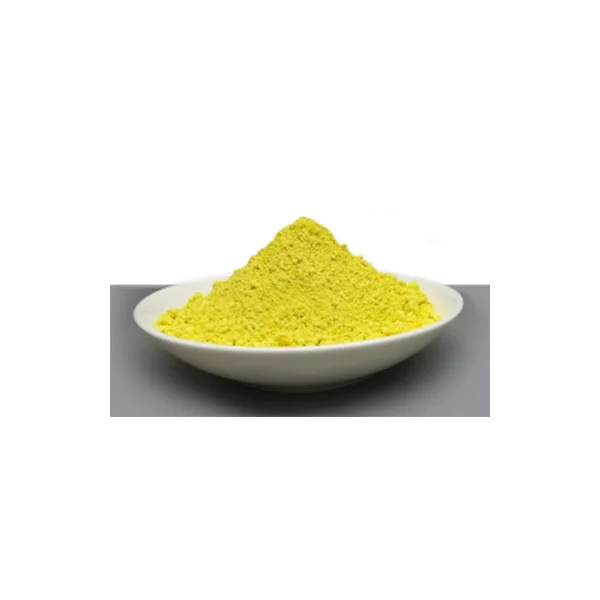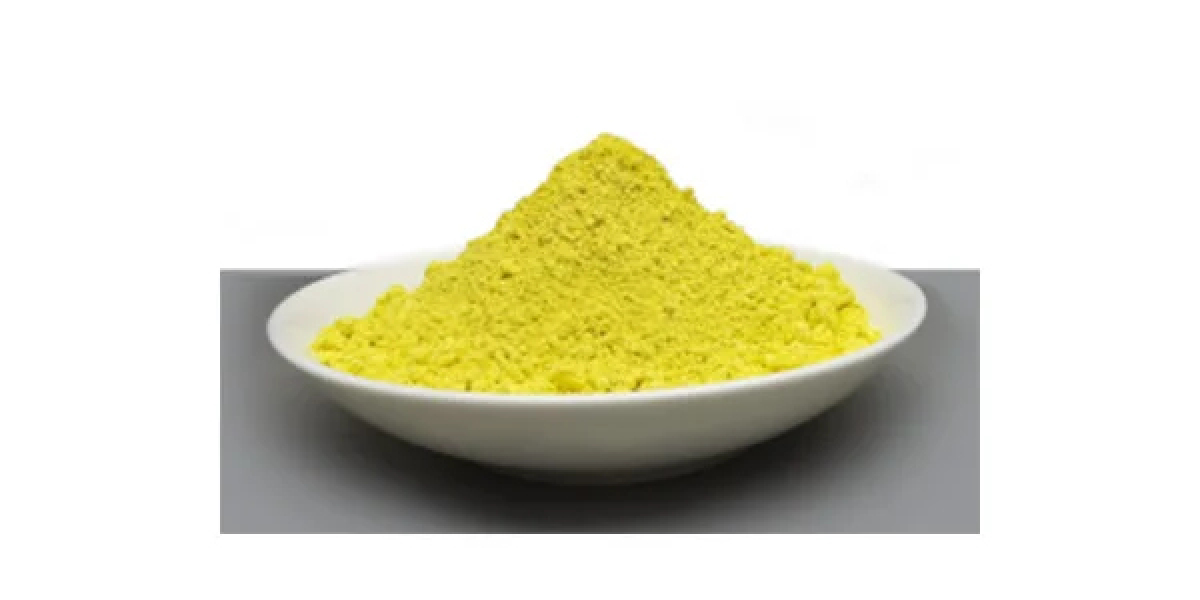Bismuth Yellow, a versatile and historically significant pigment, has captured the attention of artists, chemists, and industrialists alike due to its unique properties and diverse applications. Derived from bismuth compounds, this pigment boasts a warm, earthy hue that ranges from pale lemon to deep mustard, making it a cherished addition to artists' palettes and an essential component in various industrial processes.

Chemical Composition and Properties
Basic Structure
Bismuth Yellow pigments are primarily composed of bismuth vanadate, with the most common formula being BiVO₄. This crystalline compound exhibits a tetragonal crystal system, contributing to its stability and light-scattering properties. The inclusion of other elements, such as molybdenum or tungsten, can modify the pigment's color and stability, broaden its application scope.
Optical Properties
One of the most notable chemical properties of Bismuth Yellow is its exceptional lightfastness. This pigment resists fading when exposed to sunlight, making it ideal for outdoor applications. Additionally, its high refractive index and ability to scatter light contribute to its opacity and bright, vivid coloration.
Stability and Reactivity
Bismuth Yellow is known for its chemical stability, resistant to both acids and bases within certain limits. This stability ensures consistent performance across various media and environmental conditions, making it a reliable choice for artists and manufacturers. However, high temperatures or prolonged exposure to certain reducing agents can alter its color and structure.
Synthesis Methods
Traditional Routes
Historically, Bismuth Yellow was prepared through complex processes involving the roasting of bismuth ores with vanadium-containing minerals. These traditional methods, while rich in historical significance, are often energy-intensive and environmentally challenging.
Modern Techniques
Modern synthesis routes have significantly improved efficiency and reduced environmental impact. Sol-gel methods, for instance, involve dissolving bismuth and vanadium precursors in a solvent, followed by gelation and calcination to form the pigment. These methods offer better control over particle size and morphology, enhancing the pigment's performance.
Microwave-Assisted Synthesis
Microwave-assisted synthesis is another innovative approach that accelerates the reaction rates and improves yield. By exposing the reactants to microwave radiation, energy is transferred more efficiently, leading to shorter reaction times and potentially greener production processes.
Applications in Art and Industry
Artistic Use
In the art world, Bismuth Yellow's lightfastness, opacity, and warm tone make it a favorite among painters. Its versatility allows it to blend seamlessly with other pigments, creating a wide range of hues. Its use dates back centuries, appearing in masterpieces by renowned artists who appreciated its ability to add depth and warmth to their compositions.
Industrial Coatings
The industrial sector leverages Bismuth Yellow's durability and color consistency for applications such as paints, varnishes, and coatings. Its resistance to weathering and UV radiation makes it ideal for exterior paints, while its opacity ensures even coverage and vibrant color display.
Plastics and Polymers
In the plastics industry, Bismuth Yellow is incorporated into various polymers to enhance their aesthetic appeal. Its thermal stability allows it to withstand processing temperatures without degradation, ensuring consistent coloration in finished products ranging from household items to automotive components.
Electronics and Optics
Due to its unique optical properties, Bismuth Yellow finds niche applications in electronics and optics. It can be used in photovoltaic cells as a component in photoanodes, enhancing their efficiency. Additionally, its high refractive index makes it a valuable addition to optical coatings, where it helps manage light reflection and transmission.
Environmental and Health Considerations
While Bismuth Yellow is generally considered low in toxicity compared to other heavy metal-based pigments, its production and disposal must still adhere to strict environmental regulations. Efforts are ongoing to develop even more eco-friendly synthesis methods and recycling processes to minimize environmental footprint.
Conclusion
Bismuth Yellow pigment, with its rich history, unique chemical properties, and diverse applications, stands as a testament to the interplay between art, science, and industry. Its ability to withstand the test of time, both literally and figuratively, makes it a cherished material in multiple fields. As research continues to refine synthesis techniques and explore new applications, the future of Bismuth Yellow looks as vibrant and promising as its color.














